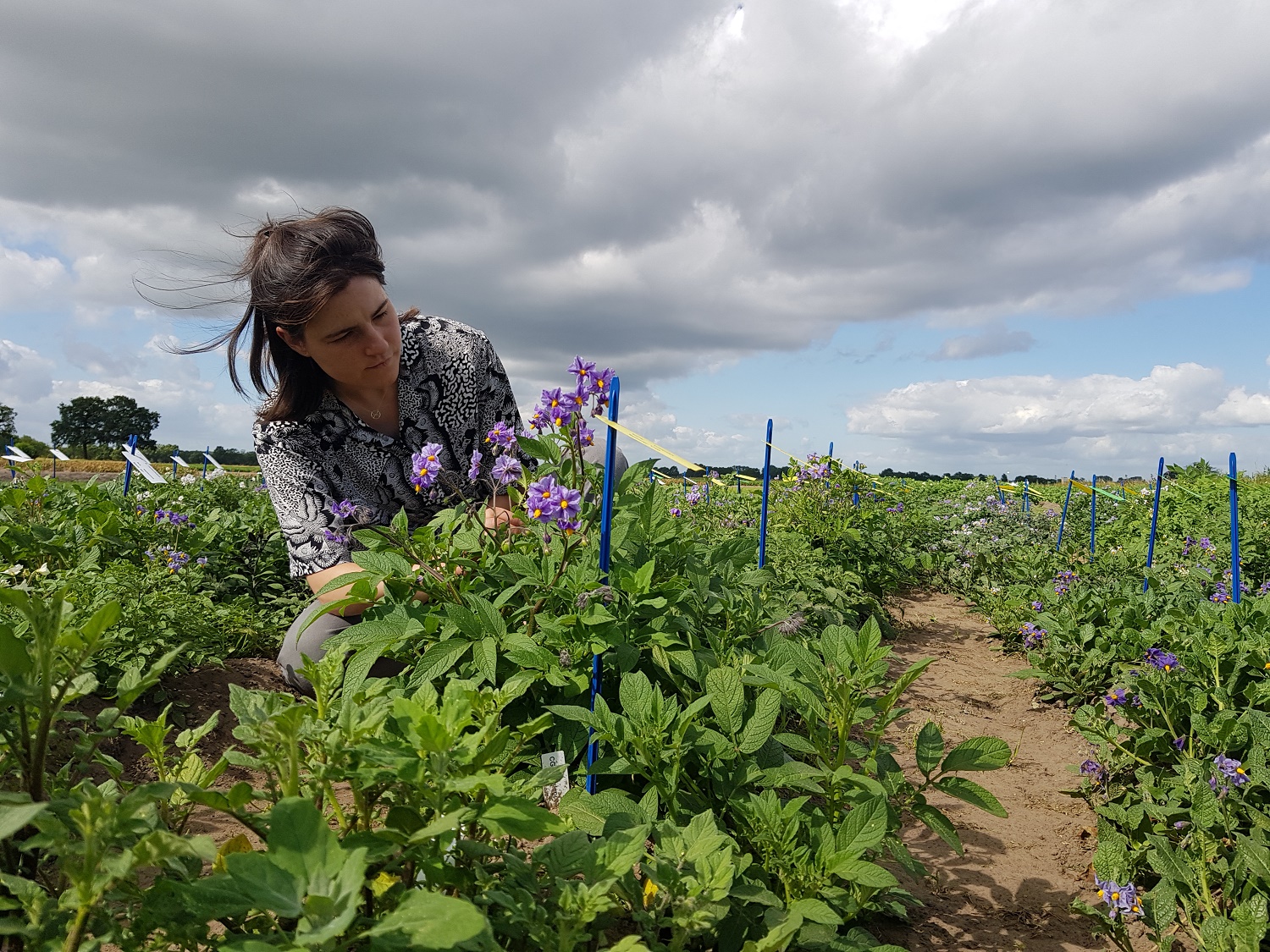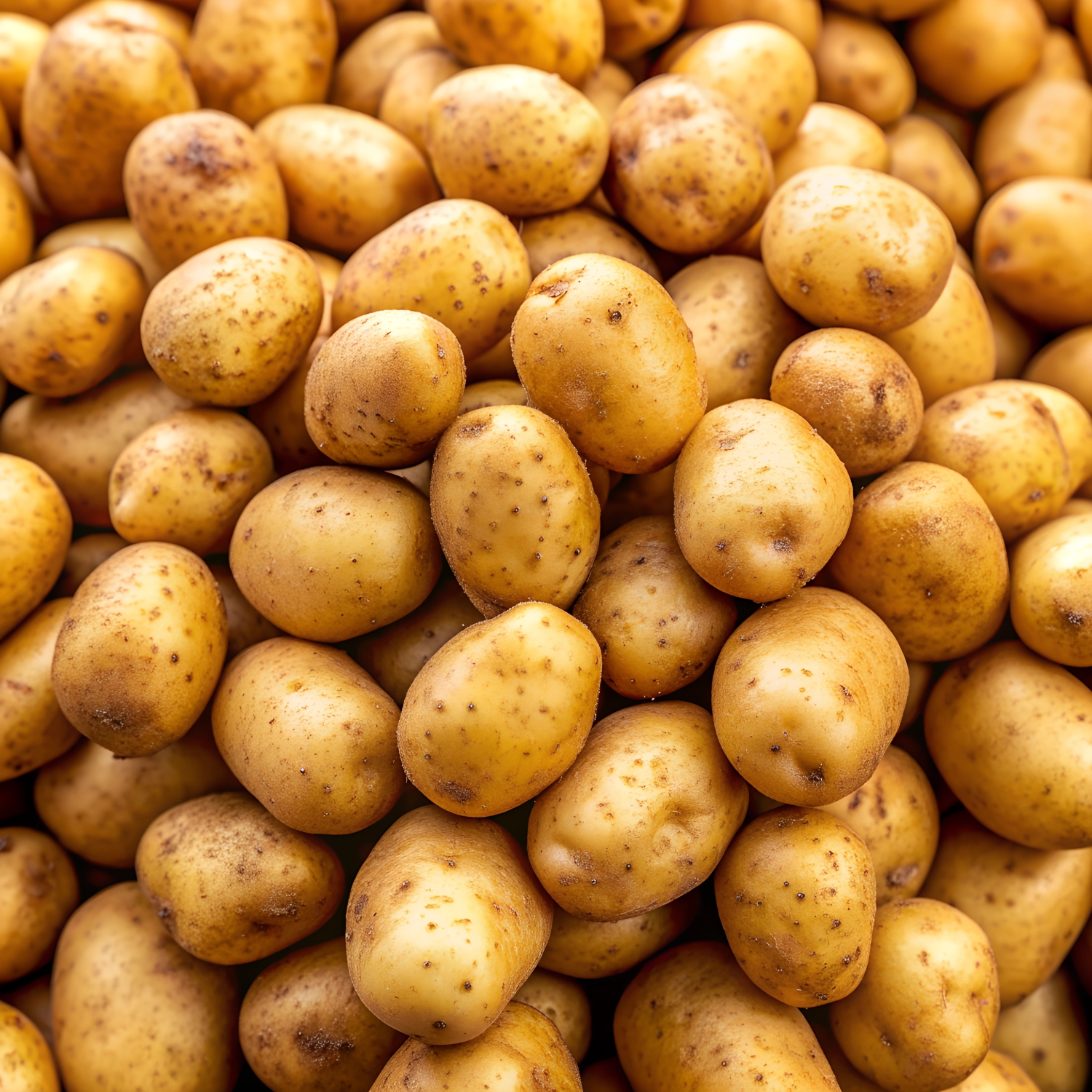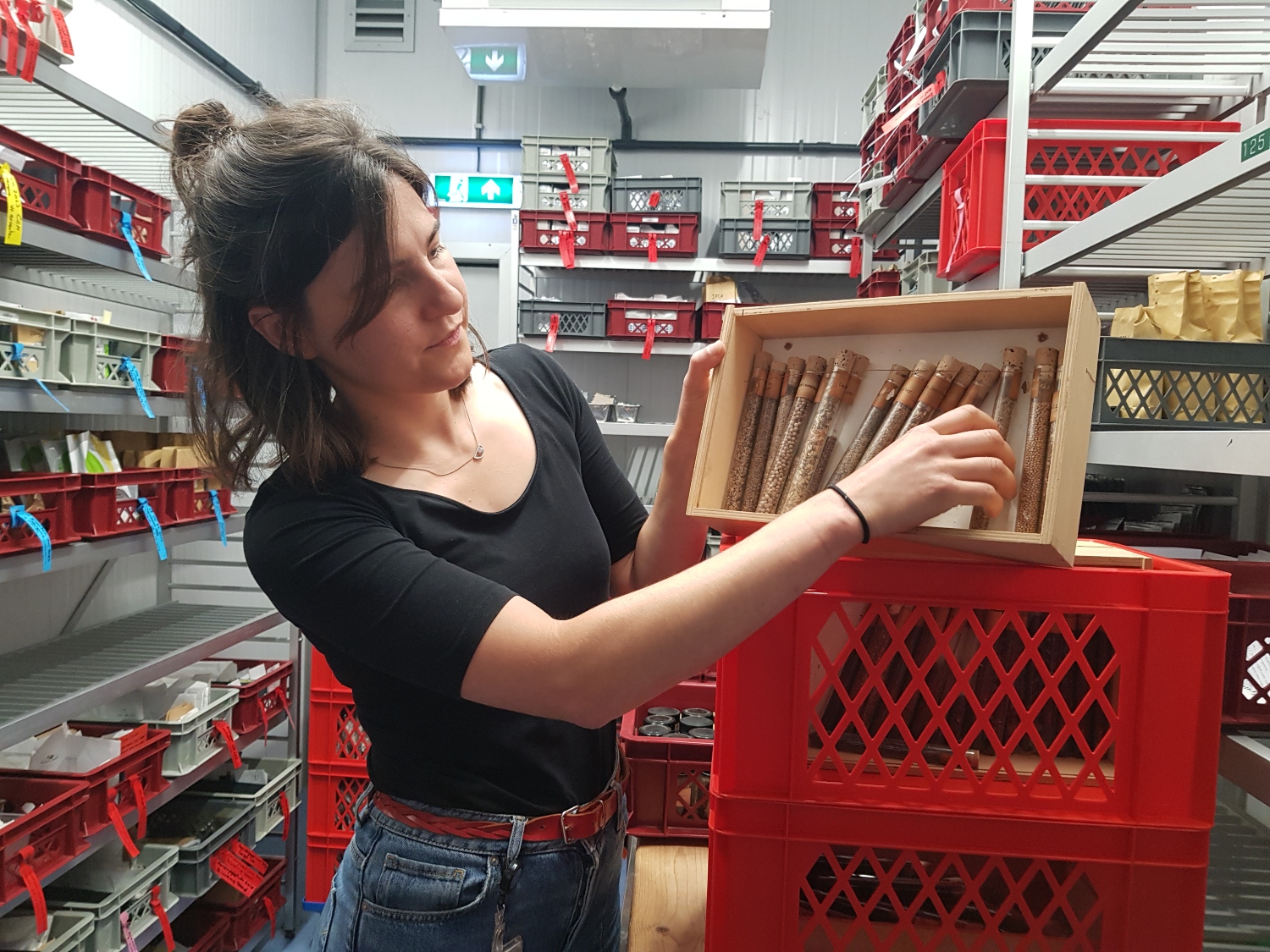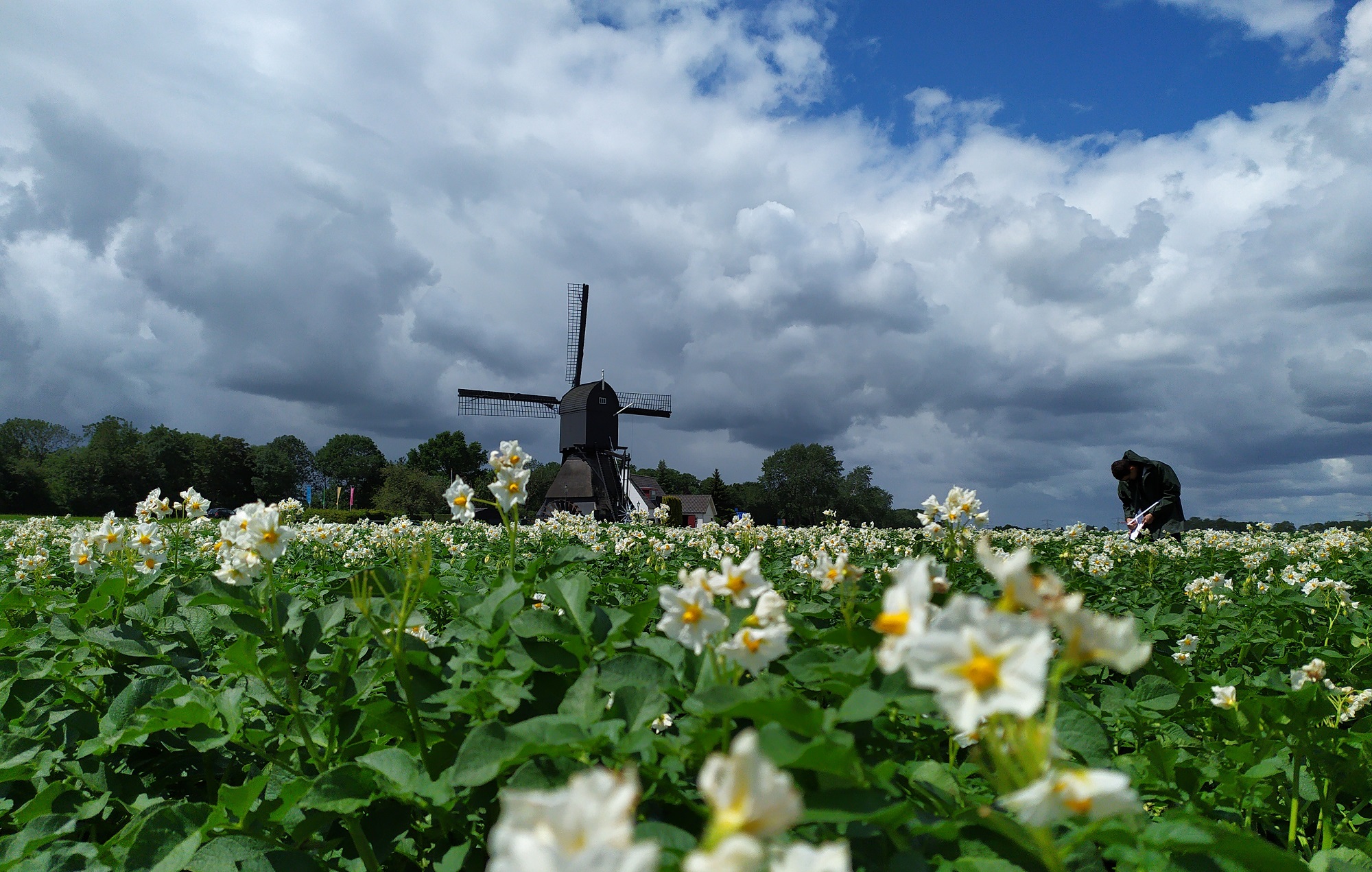Something unusual is going on in a field on Bornsesteeg. It is a sight probably never seen before, in fact. On a plot of land measuring barely 10 x 20 metres, 130 different species of wild potatoes are growing. This is the vegetable garden belonging to Lana de Bruijn, the new potato curator at the Dutch Centre for Genetic Resources (CGN).
In May, De Bruijn took over from the previous curator Roel Hoekstra, who retired after 40 years in the job. She has been focusing on the potato for more than a year at CGN. CGN manages a gene bank with potato seeds. And of course she sees potato plants when she visits growers. ‘But that doesn’t give you a real feeling for the plant,’ she explains. ‘I wanted to see, feel and smell them all.’
So the curator created her own experimental plot with the help of her predecessor. The plot contains 226 accessions of potatoes. ‘Accession is the term we use to indicate a distinct population,’ explains De Bruijn. ‘These are 226 populations of 130 species of wild potatoes.’ The plants come from Central and South America and make up two thirds of all wild potato species.
Ode
The varied collection is an ode to biodiversity. The cultivated potato that we eat comes from a plant with modest white flowers. The plants in De Bruijn’s garden have purple, pink and even yellow flowers. Bright yellow hearts stand out against deep purple petals. ‘Isn’t that fantastic? It’s just overwhelming to see all those species and subspecies.’
Some, such as the Solanum polyadenium, even have a scent. Not that it’s particularly pleasant. The scent of the leaves on this species from Central Mexico reminds you mainly of wet socks that have spent too long in the washing basket. De Bruijn laughs: ‘My predecessor Roel Hoekstra really likes the smell, but the taxonomist who first described the plant called it an appalling odour.’
Tubers
De Bruijn sowed the seeds in a greenhouse on 4 March. On 24 May, the seedlings were planted out in the field. ‘Some were already flowering and have now finished. Others are just starting to flower. They all have different timings. That is another sign of the variation. One even had tiny tubers by the time they were planted out.’ De Bruijn visits the plot as often as her work allows, partly to weed it but mainly to see the plants and learn from them.
Nearly all the species in the field produce tubers. Does that mean a harvest feast at the end of the summer? ‘Possibly,’ she says cautiously, ‘But I don’t think that would be so nice for the guests. These tubers contain a lot of glycoalkaloids. They taste bitter and give you stomach pains.’
Also read:

 Potato curator Lana de Bruijn in her potato field. Photo Roelof Kleis
Potato curator Lana de Bruijn in her potato field. Photo Roelof Kleis 

